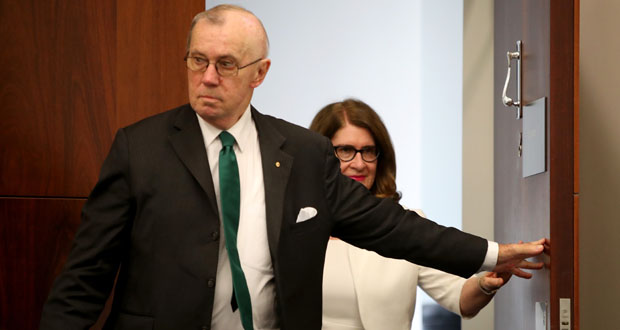Some people would rather die than go into residential aged care facilities.
This is according to UnitingCare Australia’s Claerwen Little, who told the commission about the findings from Uniting’s research into community perceptions of aged care.
They found, among other things, that although it is in people’s minds, aged care is not seen as the most pressing issue for the government to fix.
However, the research did find that the wider public had a number of misconceptions about the sector.
“People thought that it was dominated by the for-profit sector, that… the big for-profits were making a lot of money out of aged care,” Little said.
“That it was mostly residential care… And the sort of nuances of community home support program and home care program really weren’t part of their… understanding of the aged care system and sector.”
The research also showed that our understanding of who funds aged care is limited, and what’s more, people don’t want to pay for it themselves.
“They think that more money is needed from government. And I think one of the other key findings is that people don’t believe that they should be paying for aged care. They do believe they’ve paid their taxes and they’ve contributed to the community all their life and that they should be supported in old age,” Little said.
When asked what their findings say about perceptions of aged care, Little did not sugar-coat her response.
“Sadly, some people suggested they would rather die than go into a residential aged care facility. They would rather poke their eye with a pencil than have to enter a home,” she said.
Rise in “serious risk” findings follow funding freeze
Earlier in the week, the commission heard that the year after the Government stalled aged care funding there was a marked increase in findings of “substandard care that would impact on the health and wellbeing of a care recipient”.
During the evidence of the secretary of the department of health, Glenys Beauchamp, council assisting Gray alluded to a correlation between the two outcomes.
In the year 2015–16 the Australian Aged Care Quality Agency found only two aged care providers to be a “serious risk”. The following year, concurrent with the government’s indexation of the Aged Care Funding Instrument, there were 22 serious risk findings, and the year after a jump to 61.
Gray asked whether funding levels were sufficient and if funding freezes impacted safety standards, but Beauchamp proved hard to pin down, causing Gray to repeat the question: Beauchamp suggested that “it is sufficient for the forward estimates period”.
We also heard evidence (from data contained in consumer experience reports conducted in over 1100 facilities) that 98.3 per cent of aged care residents felt safe.
However, when more closely inspected, those figures are misleading. Assisting council Gray pointed out that in fact the survey was broken down into categories, and that of the 98.3 per cent 17.21 per cent of respondents answered that they felt safe only “most of the time”.
Beauchamp was evasive when asked about the staffing levels and budget allocations dedicated to aged care in her department and whether these have fluctuated over the last five years. She told the commission that of the department’s overall budget of $700 million, “approximately between 13 and 15 per cent” is allocated to aged care.
When pressed on what arrangements are in place for her department’s handover of regulatory functions to the new Aged Care Quality and Safety Commission – slated for 1 January 2020 – Beauchamp admitted there are, as yet, no formalised arrangements or plans for improving the regulatory practices.
Beauchamp was also quizzed on current and future quality frameworks, with council assisting Gray noting that the new single quality framework – coming in to force on 1 July this year – is less detailed than the current arrangements.
“If we go back to the new single quality framework, there doesn’t seem to be any mention of oral and dental health. Is that right?” he said.
“I think that’s more broadly rolled up into the clinical care – the personal care and clinical care standard,” replied Beauchamp.
When asked by commissioner Briggs if she would feel comfortable putting a loved one in a facility under current standards and if these standards reflected community ideals, Beauchamp was non-committal.
“I think the current standards require a subjective assessment, not necessarily based on how the client feels and what the client is experiencing, but I think the new standards absolutely put the care recipient at the centre,” she said.
Do you have an idea for a story?Email [email protected]
 Aged Care Insite Australia's number one aged care news source
Aged Care Insite Australia's number one aged care news source

